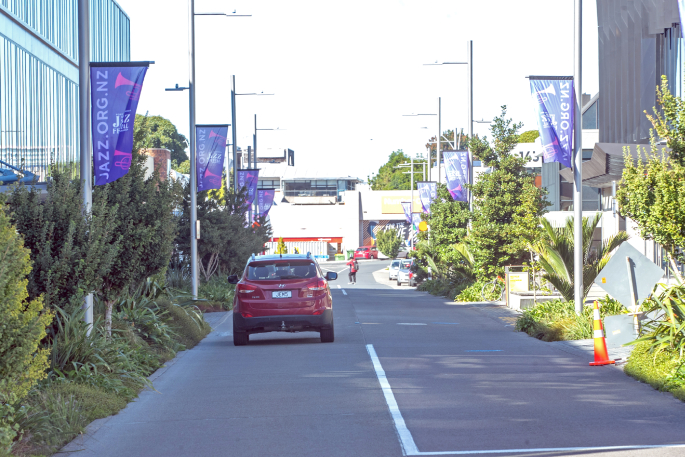Plans for bus ‘super stops’ in Tauranga’s city centre are opposed by landowners and developers, causing council to defer its decision.
Tauranga City Council proposed two new 90-metre bus stops on either side of Durham St south, at the Elizabeth St end.
These stops would enable up to six buses to stop at once and also see the removal of 18 carparks.
Buses currently leave from Durham St north, but this was intended as an interim interchange.
Council staff sought a decision on the stops as part of the city’s movement framework at a council meeting on Monday.
Collier Consultants founder Aaron Collier, representing developers Classic Group and Zariba Holdings, told the meeting it was “a bit disappointing” they heard about the plans third-hand before initiating consultation with council staff.
Classic Group and Zariba Holdings jointly own land on Durham St and they had a “significant redevelopment” planned for 142 Durham St.
One of the ‘super stops’ would be in front of the proposed commercial building with ground floor retail space.
“One of the key considerations for any redevelopment in the CBD now, is making sure that we have good active frontages and interactions with public space,” says Aaron.
A lot of the social, economic, urban design and traffic concerns hadn’t been considered, he says.
There were concerns about social issues arising at large bus stops, says Aaron.
Before the bus stops were moved to Durham St north two years ago, there was an interchange on Willow St.
It was a hangout for homeless and youth, causing antisocial behaviour that prompted security guards to be hired.
Aaron suggests the stops remained where they were further up Durham St or be spread along the southern end of the street with three separate stops on either side.
The owners are opposed to the ‘super stops’ but supportive of separate bus stops.
“There needs to be a bit more thought and a bit more planning involved.”
Commission chair Anne Tolley says it’s disappointing to hear landowners weren’t involved in early consultation.
The streetscaping, road strengthening and wastewater upgrades on Durham St had cost ratepayers $10.5m, says Anne.
If the council went with the developers’ suggestion of spreading out the stops some of the gardens would need to be replaced with bus stops, says Anne.
She asked if the landowners would be willing to contribute to those costs.
Dwayne Roper of Zabrina Holdings says they will be contributing through development contributions anyway.
Simon Collier, a shareholder of Foster Construction, which planed a five-storey commercial development at 159 Durham St, says the plans wouldn’t be viable with ‘super stops’ out front.
“Our tenants will be concerned about the safety of having all of those people directly in front of their building.”
Having the stops spread out would dissipate any congregation, says Simon.
Anne says there are some “serious social issues” at the Willow St interchange but incidents had been rare on Durham St.
“There is a bad perception, I understand that and the nervousness around it, but it will change over time.”
Anne says they struggled with the practicality of “huge, big yellow buses, which are largely empty” driving around a “very small CBD”.
The council is struggling to find room for what the Bay of Plenty Regional Council, which runs the bus service, needed in future, says Anne.
The commission opted to defer the decision about the ‘super stops’ and have staff engage with affected parties about their location and report back in six weeks.
Council adopted new bus stops; four individual bays on Willow, Harington and Hamilton streets, as well as two near Baycourt Community Arts Centre.
It also designated Dive Crescent as an area that could have six stops when the need arose in future.
LDR is local body journalism co-funded by RNZ and NZ On Air.


